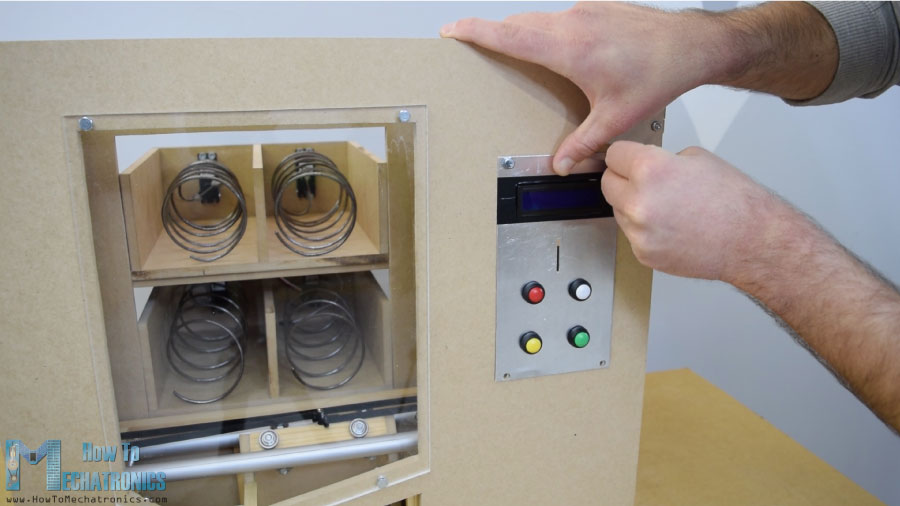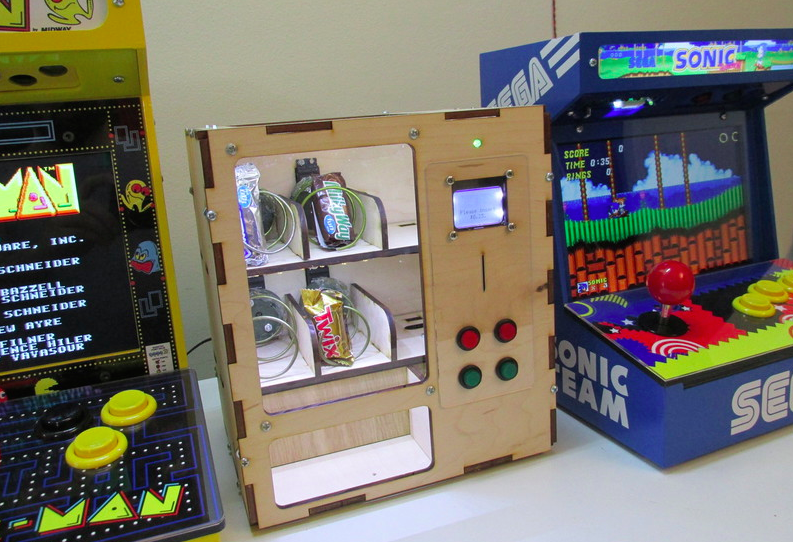These high school students built their own vending machine

If you’re a high school student and would appreciate a vending machine in class, what’s to be done? Most of the time the answer is “not much,” but Tustin High T-Tech students were able to get one—by building it themselves!
In fact, this excellent device functioned both as a class project and as a fundraiser for their engineering program. It can be seen working in the video below, and uses an Arduino Mega for control, along with motor drivers and steppers to actuate six snack pusher coils.
Customers simply insert a dollar into the bill acceptor, punch in the correct number in the keypad, and snacks drop out. Arduino code is published here, and Solidworks design files are also available for your DIY vending edification.



